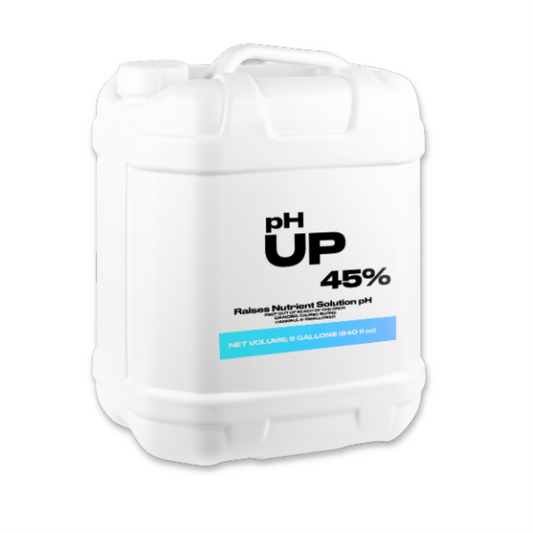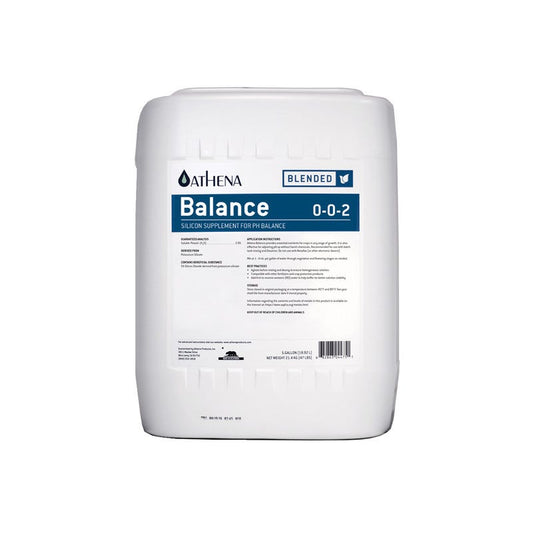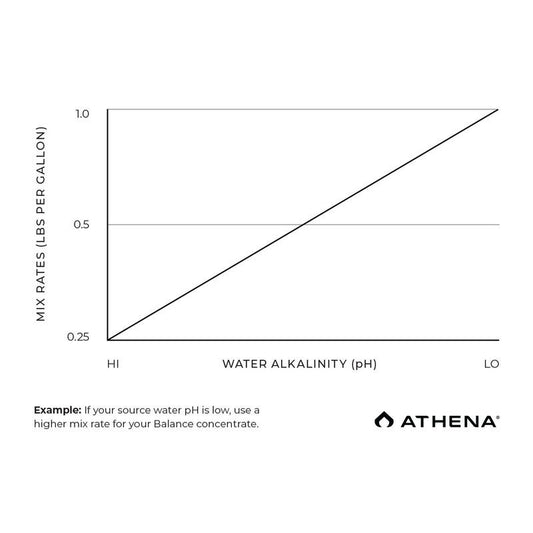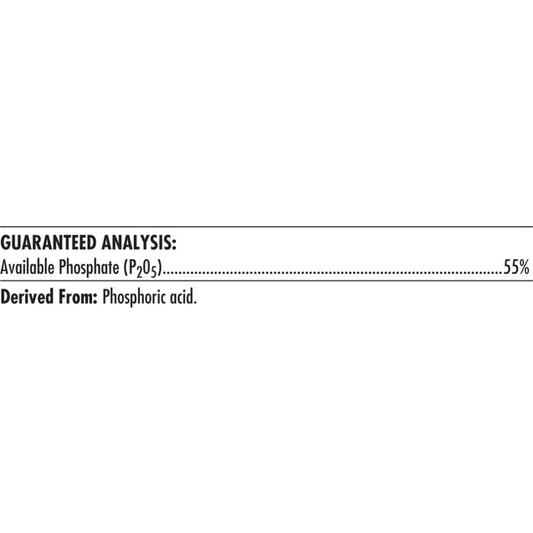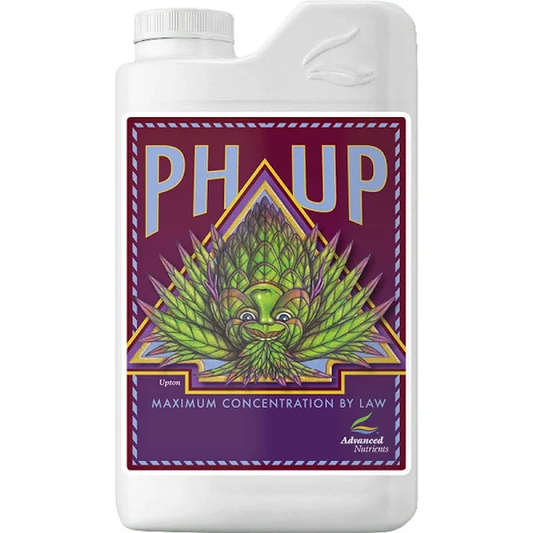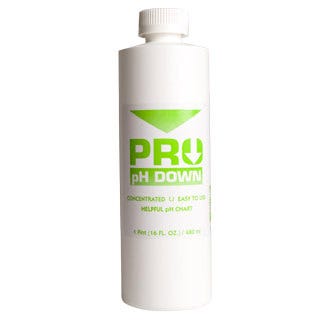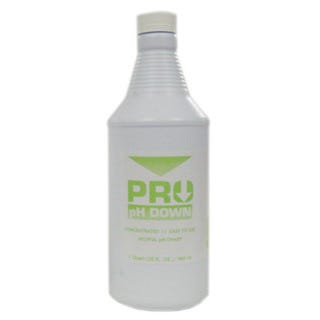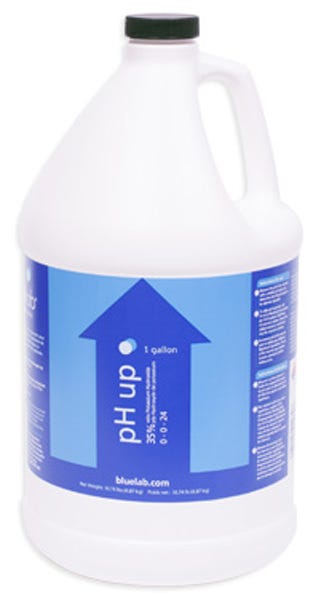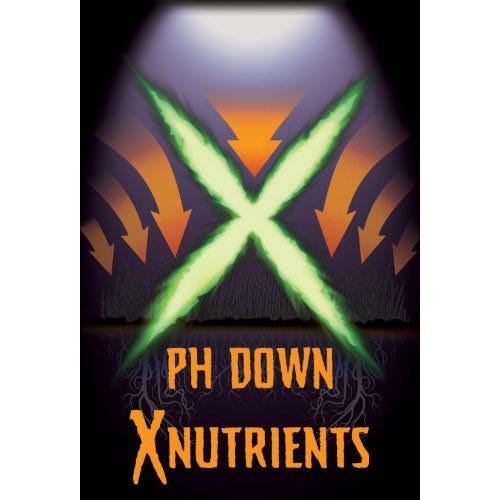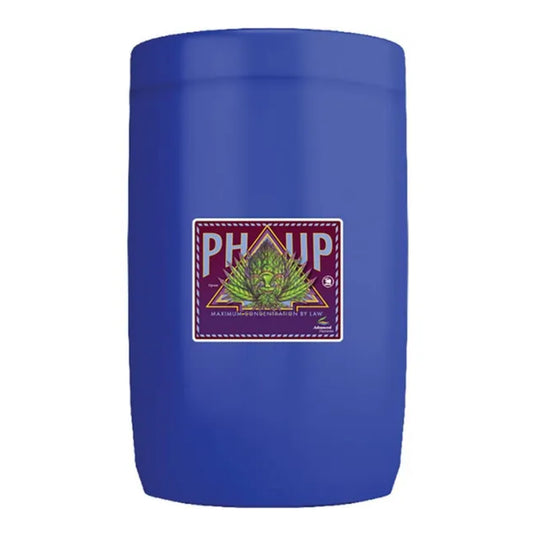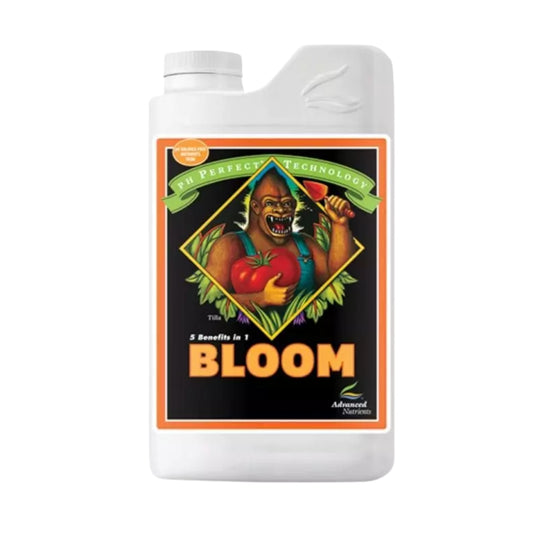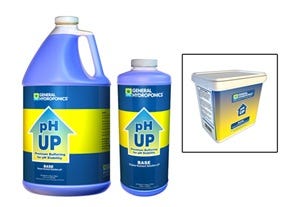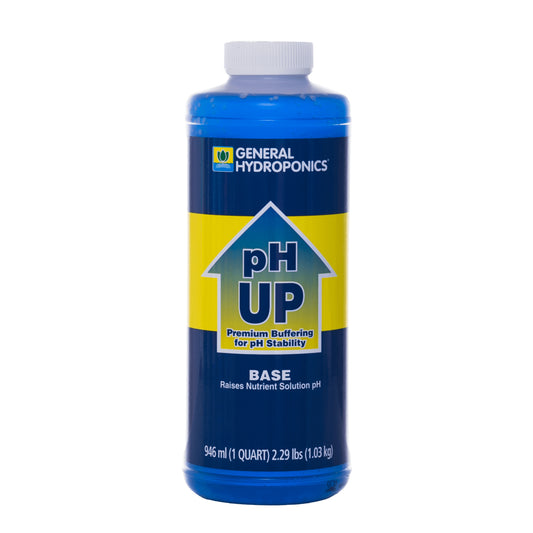pH Up + Down
Dial in your hydroponic system with pH Up + Down solutions from GrowersHouse. Our hydroponic pH control products help stabilize nutrient availability, protect root-zone health, and support strong, consistent growth in indoor, greenhouse, and controlled environment setups.
-
VPS pH UP
Vendor:Ventana Plant ScienceRegular price From $42.89 USDRegular priceUnit price / per -
VPS pH Down + Line Cleaner
Vendor:Ventana Plant ScienceRegular price From $50.73 USDRegular priceUnit price / perVPS pH Down + Line Cleaner
Regular price From $50.73 USDRegular priceUnit price / perVPS pH Down + Line Cleaner
Regular price From $50.73 USDRegular priceUnit price / per -
General Hydroponics pH Test Color Match Control Kit
Vendor:General HydroponicsRegular price $15.62 USDRegular priceUnit price / per -
Athena Blended - Balance
Vendor:AthenaRegular price From $25.71 USDRegular priceUnit price / per$140.00 USDSale price From $25.71 USDAthena Blended - Balance
Regular price From $25.71 USDRegular priceUnit price / per$140.00 USDSale price From $25.71 USDAthena Blended - Balance
Regular price From $25.71 USDRegular priceUnit price / per$140.00 USDSale price From $25.71 USDSale -
Athena Pro Balance pH UP
Vendor:AthenaRegular price $147.00 USDRegular priceUnit price / per$147.00 USDSale price $147.00 USD -
General Hydroponics pH Down Liquid
Vendor:General HydroponicsRegular price From $7.40 USDRegular priceUnit price / perGeneral Hydroponics pH Down Liquid
Regular price From $7.40 USDRegular priceUnit price / perGeneral Hydroponics pH Down Liquid
Regular price From $7.40 USDRegular priceUnit price / per -
Advanced Nutrients - pH Down
Vendor:Advanced NutrientsRegular price From $17.59 USDRegular priceUnit price / per$18.59 USDSale price From $17.59 USDAdvanced Nutrients - pH Down
Regular price From $17.59 USDRegular priceUnit price / per$18.59 USDSale price From $17.59 USDAdvanced Nutrients - pH Down
Regular price From $17.59 USDRegular priceUnit price / per$18.59 USDSale price From $17.59 USDSale -
Advanced Nutrients - pH Up
Vendor:Advanced NutrientsRegular price From $17.59 USDRegular priceUnit price / per$18.59 USDSale price From $17.59 USDAdvanced Nutrients - pH Up
Regular price From $17.59 USDRegular priceUnit price / per$18.59 USDSale price From $17.59 USDAdvanced Nutrients - pH Up
Regular price From $17.59 USDRegular priceUnit price / per$18.59 USDSale price From $17.59 USDSale -
Pro pH Down
Vendor:*AAA NO BrandRegular price From $60.00 USDRegular priceUnit price / perPro pH Down
Regular price From $60.00 USDRegular priceUnit price / perPro pH Down
Regular price From $60.00 USDRegular priceUnit price / per -
Bluelab pH Up Solution - 1 Gal
Vendor:BluelabRegular price $47.72 USDRegular priceUnit price / per -
X Nutrients - PH Down
Vendor:X NutrientsRegular price From $13.08 USDRegular priceUnit price / perX Nutrients - PH Down
Regular price From $13.08 USDRegular priceUnit price / perX Nutrients - PH Down
Regular price From $13.08 USDRegular priceUnit price / per -
X Nutrients - PH Up
Vendor:X NutrientsRegular price From $12.36 USDRegular priceUnit price / perX Nutrients - PH Up
Regular price From $12.36 USDRegular priceUnit price / perX Nutrients - PH Up
Regular price From $12.36 USDRegular priceUnit price / per -
Advanced Nutrients pH Up 0-0-38 | 57L for Hydroponics
Vendor:Advanced NutrientsRegular price $622.67 USDRegular priceUnit price / per$622.67 USDSale price $622.67 USD -
Advanced Nutrients pH Perfect Bloom 1-3-4 | 1 L
Vendor:Advanced NutrientsRegular price $9.81 USDRegular priceUnit price / per$10.37 USDSale price $9.81 USDSale -
Advanced Nutrients pH Perfect Bloom 1-3-4 | 4L
Vendor:Advanced NutrientsRegular price $33.04 USDRegular priceUnit price / per$33.04 USDSale price $33.04 USD -
General Hydroponics pH Up Liquid
Vendor:General HydroponicsRegular price From $11.84 USDRegular priceUnit price / perGeneral Hydroponics pH Up Liquid
Regular price From $11.84 USDRegular priceUnit price / perGeneral Hydroponics pH Up Liquid
Regular price From $11.84 USDRegular priceUnit price / per
pH Up + Down
Keep nutrient uptake in the ideal range with our pH Up + Down collection for hydroponics, indoor gardens, greenhouses, and other controlled environments. Plants absorb essential elements at different pH levels, with many thriving in slightly acidic root zones while others tolerate more alkaline conditions. By dialing in pH with reliable pH up and pH down solutions, you prevent common leaf issues, reduce the risk of nutrient deficiencies, and support faster growth with more consistent yields ...
Key Benefits of Using pH Up + Down
Using dedicated pH control solutions in your hydroponic or fertigation system delivers several important advantages:
- Reduces nutrient lockout and visible leaf problems related to poor pH.
- Supports faster growth, stronger root systems, and more uniform canopies.
- Helps protect yields by keeping nutrient availability in the ideal range.
- Alerts growers to system changes early, before plants show severe stress.
- Integrates easily into daily checks for indoor and greenhouse operations.
How Growers Use pH Up and pH Down
In most hydroponic and recirculating systems, checking and adjusting pH is part of the daily routine. Growers first measure the solution using a calibrated pH tester or meter, then make small corrections with pH up (alkaline) or pH down (acidic) until the solution falls within the desired range. This becomes especially important after mixing fresh nutrients, topping off reservoirs, or adjusting environmental conditions that can shift pH over time.
Before any adjustments, it is vital to know your baseline pH using accurate testing tools. Once you understand how your source water, nutrient brand, and system behave, you can develop a repeatable pH management routine that keeps plants comfortable and minimizes surprises.
Types of pH Adjusters in This Collection
-
Liquid pH Up + Down Solutions
- Liquid pH adjusters are the most common choice for hydroponic systems because they mix quickly and allow for precise, incremental changes. Growers typically add a small amount to a separate container of water, stir well, and then introduce this diluted solution to the reservoir for smoother adjustments.
-
Dry or Powdered pH Adjusters
- Dry pH powders offer highly concentrated pH control in a compact format, ideal for larger facilities or growers who want to minimize storage space. These products are usually dissolved in water before being added to the system, giving you strong pH control with efficient shipping and handling.
-
pH Control Kits and Bundles
- Some growers prefer complete pH kits that combine pH up, pH down, and testing solutions or meters in one package. These bundles make it easy to start a new hydroponic system or standardize pH management across multiple rooms, ensuring everyone on the team follows the same procedure.
Frequently Asked Questions
What is the best pH level for hydroponics?
Most hydroponic crops perform best in a slightly acidic range, typically between 5.5 and 6.5, with many growers targeting a “sweet spot” around 5.8–6.2. Within this range, key nutrients such as nitrogen, phosphorus, potassium, calcium, magnesium, and trace elements remain available and stable in solution. Exact targets can vary by crop and growth stage, but staying inside this band helps minimize deficiencies and lockout.
How do you adjust the pH in hydroponics?
Start by calibrating your pH meter or verifying your test kit, then measure the nutrient solution after all fertilizers and additives are mixed. If the reading is too high, add a small amount of pH down; if it is too low, add pH up. Always dilute concentrates in a separate container of water, add gradually while circulating the reservoir, wait a few minutes for the solution to mix evenly, and then re-test. Repeat in small steps until you reach your target range to avoid overshooting.
What happens if pH is too high in hydroponics?
When pH drifts too high (alkaline), several nutrients—especially iron, manganese, and phosphorus—become harder for plants to absorb. This can lead to pale or yellowing new growth, slow development, weak stems, and poor flowering, even if your EC or PPM looks normal. Prolonged high pH may also cause certain elements to precipitate out of solution, reducing overall nutrient efficiency and forcing plants to work harder to access what they need.
Do you add pH before or after nutrients?
In hydroponics, you should almost always add nutrients first and adjust pH last. Begin with your source water, mix in all base nutrients and additives according to the feed schedule, allow the solution to stabilize, and then measure pH. Only after the full nutrient mix is in the reservoir should you use pH up or pH down to fine-tune the final value. This approach prevents repeated corrections and helps keep your pH more stable over time.


